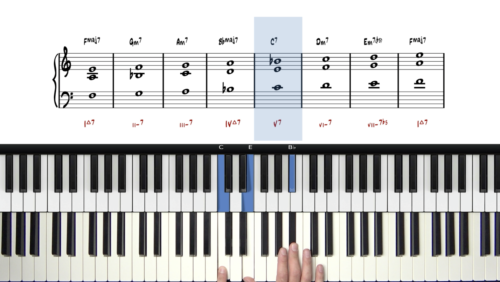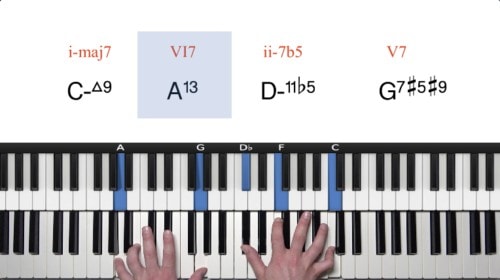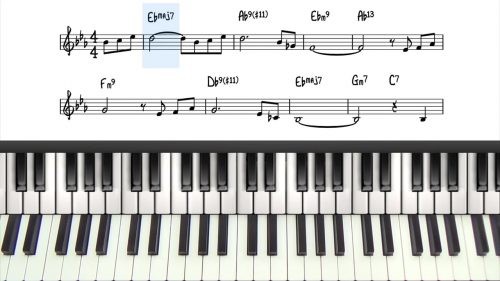What Is A Modulation In Jazz?
Welcome to lesson 2 in our minor harmony and improv course. In the first lesson we explored the harmony of D Minor and we analysed the harmonic framework of the A Section of “In A Sentimental Mood”.
We will now explore the harmony of the B section. The ‘B section’ is also known as ‘the bridge’ so remember that these 2 terms are interchangeable.
The Modulation To The B Section
When playing “In A Sentimental Mood” we must be aware that there is a modulation when we move from the 2nd A section to the B section. A modulation is when a song changes key for an extended period of time. In this case 6 of the 8 bars of the B Section are in the key of Db major.
Before a modulation occurs we generally find a 5 chord, or a 25 progression that prepares us to modulate into the new key. Looking in bar 16 which is the final bar of the 2nd A section you can see that we have an Eb-7 to an Ab7 chord which is a 25 progression in the new key – Db major.
Db Major Diatonic Harmony
We explore the diatonic harmony of the key of Db Major and use this information to analyse the harmonic structure of the bridge. We then build common progressions, starting with the 251 progression, and also introducing the 3 and 6 chords into the progression.
Once we are familiar with the diatonic harmony of Db Major we analyse the chords and progressions in the B Section of the tune.
Practice Tips
-
A modulation is when a song changes key for an extended period of time.
-
Modulations are typically proceeded by a V7 or ii-V of the new key. We can see an Eb-7 and an Ab7 in bar 16 which triggers the modulation to the new key (Db Major).
-
Notice the repeating 1625 progression in the B section. The VI chord can be played as a dominant chord as we will explore in the upcoming lessons.






